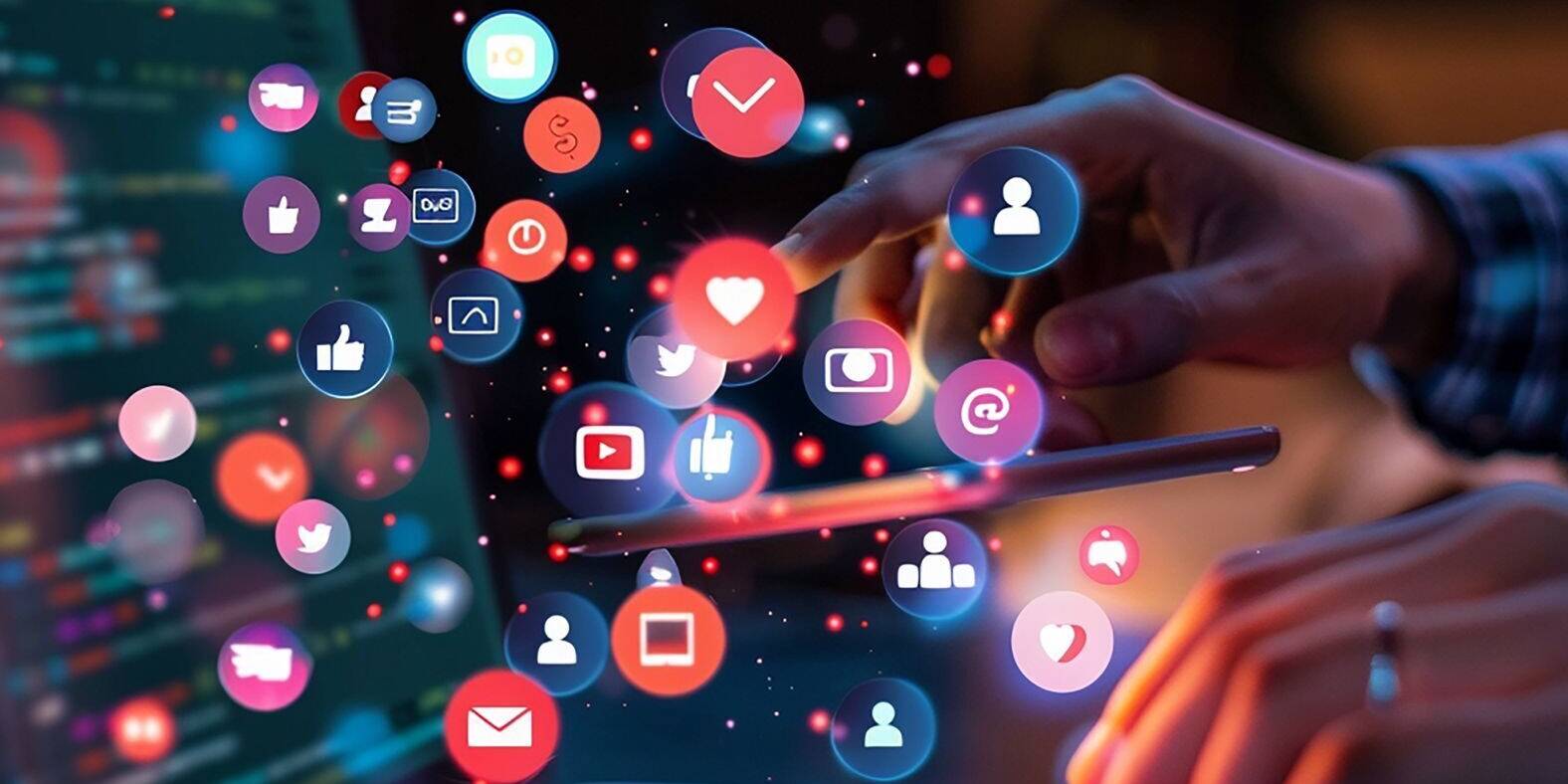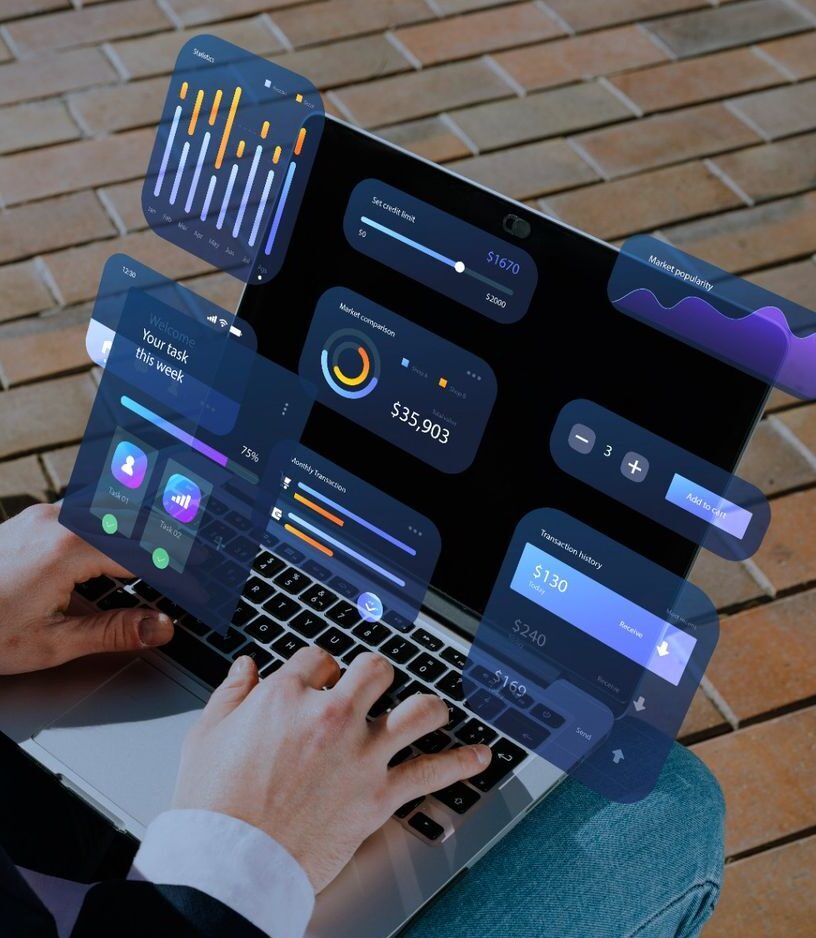It is crazy how rapidly the landscape of digital marketing is changing. In one of our previous blogs, we talked about the digital marketing trends in 2024, and one of the game-changing trends that we can anticipate is the use of augmented reality and virtual reality in campaigns. We are not kidding; most companies are already using these technologies to up their game. Discover more about it in this blog and witness how these technologies are revolutionizing marketing strategies for companies across the board.
Generative AI
The marvel of Generative AI, a standout in 2023, continues to shape immersive online experiences in 2024. From crafting digital environments to populating them with lifelike characters, this technology revolutionizes the creation of 3D worlds. Mark Zuckerberg envisions a streamlined design process, indicating its potential to redefine efficiency.
Multi-Sensory Technology
Immersion reaches new heights with advancements in multi-sensory technology. Beyond headsets and speakers, haptic gloves promise tangible interaction, simulating weight and pressure. Innovations extend to devices recreating missing senses, such as smell, through scented vapours. Full-body suits promise a holistic immersive experience, providing users with a genuine sense of presence.
More Powerful, Versatile, And Lighter Devices
2024 brings a wave of new devices catering to diverse preferences. From Meta’s Quest 3 to Apple’s AR glasses, manufacturers strive to offer enhanced experiences. Some devices focus on innovation, while others prioritize refinement and simplicity, recognizing the need to overcome barriers to adoption such as size and weight.
What Does It Mean For The Marketing World?
The marketing game, which is already pretty wild, is about to kick into an even higher gear with the arrival of AR and VR trends. Dive in to discover what exciting changes are on the horizon!
Immersive Retail
Augmented reality has transformed how we experience retail online, from trying on virtual glasses to envisioning furniture in our living spaces. As interfaces become more seamless, 2024 will witness the emergence of refined mixed-reality retail experiences. Physical stores integrate online elements, merging the convenience of online shopping with the tangible feel of in-store browsing.
Immersive Customer Experience
Brands are investing in virtual environments, fostering interactions that solve problems and enhance the overall customer journey. Immersive marketing becomes a powerful tool for brands to craft unique and memorable experiences that drive engagement and conversions.
Captivating Narratives And Visual Stories
AR and VR technologies enable advertisers to craft immersive visual stories that transcend traditional formats. Imagine an advertisement where consumers can interact with the product in a virtual environment or explore its features in three-dimensional space. This dynamic storytelling not only captures attention but also fosters a deeper connection between the brand and the audience.
Billboards With Interactive Visuals
Traditional billboards are evolving into interactive experiences with the integration of AR and VR. Augmented reality billboards allow passersby to engage with content through their smartphones, bringing static advertisements to life. Whether it’s unveiling product features or offering exclusive discounts, these interactive billboards transform the urban landscape into a dynamic canvas of immersive brand experiences.
Realistic Video Content And Campaigns
Short-form video content, such as reels, takes on a new dimension with immersive storytelling. AR and VR technologies empower brands to create captivating and interactive short videos that go beyond conventional narratives.
AI-driven Immersion
Artificial Intelligence (AI) plays a crucial role in enhancing the immersive nature of AR and VR experiences in advertising. AI algorithms can personalize content based on user preferences, creating tailored and relevant experiences. From suggesting interactive elements to predicting user interactions, AI ensures that each consumer engages with the content in a way that resonates with their individual preferences.
Industries leveraging the AR/VR For Marketing
Let’s explore how different sectors are leveraging AR to provide unique and immersive experiences:
Real Estate And Home Improvement
Real Estate and Construction companies are offering clients virtual walkthroughs of buildings before they are even constructed. This not only aids in the planning phase but also enhances client engagement. Also, companies in the home improvement sector can leverage AR to assist customers in visualizing how new furniture or decor items will fit into their homes. Users can virtually place and rearrange items, facilitating more informed purchase decisions
Fashion And Beauty
Beauty brands are utilizing AR to enable customers to virtually try different makeup products. through their mobile devices. This interactive experience enables users to see how different shades and products look on their faces before making a purchase decision.
Augmented Reality can revolutionize the way people shop for clothing. Customers can use AR applications to virtually try on outfits, experiment with various styles, and see how they look from different angles, providing a personalized and engaging shopping experience.
Electronics And Furniture
Retailers across various industries, from electronics to furniture, can integrate AR to enhance the shopping experience. Customers can use their smartphones to visualize how products will look in their homes before making a purchase, reducing uncertainty and increasing confidence in buying decisions.
Car Companies
Car manufacturers can use AR to enable potential buyers to virtually explore different car models. Users can view interactive 3D models, explore interior features, and even take virtual test drives, providing a comprehensive and immersive understanding of the vehicles.
As AR and VR redefine marketing, the journey ahead promises not just innovation but an immersive revolution that bridges the gap between brands and consumers. Get ready for a marketing experience that transcends boundaries and creates lasting impressions.



